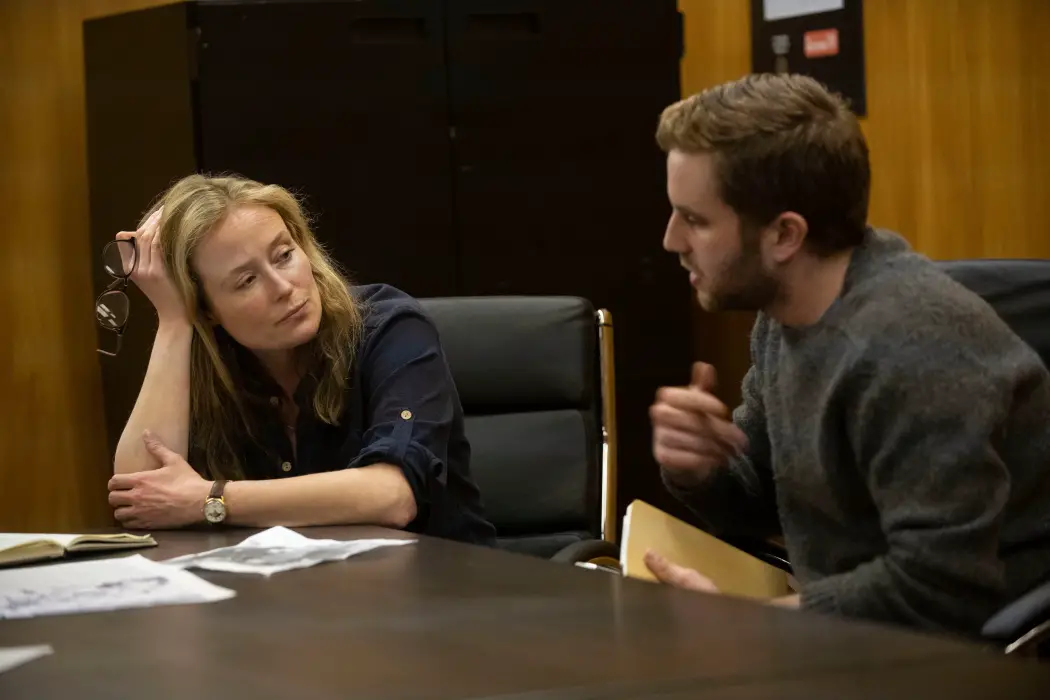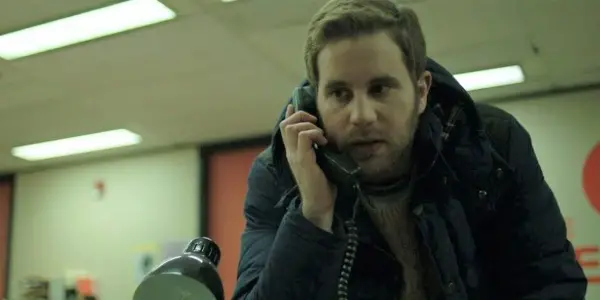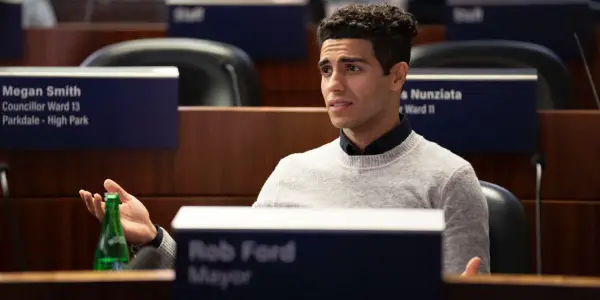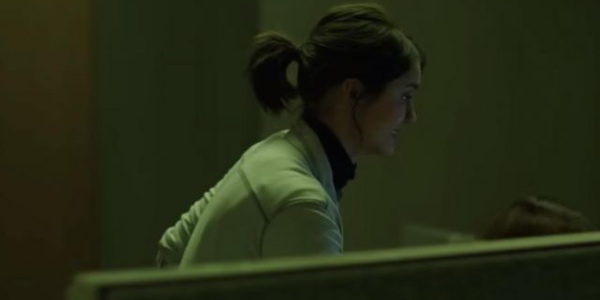RUN THIS TOWN: Doesn’t Know What Direction It Wants to Run

Stephanie Archer is 39 year old film fanatic living in…
The game of cat and mouse has been a storyline structure utilized throughout film for decades. One element or person chasing another, hoping for the ultimate payoff. Some are chasing gold, others the truth. For this structure of story to succeed, often times you need a tight script, a sharp cast and crisp editing to help the story maintain its tension and the the focus of an audience. Unfortunately, Run This Town does not fit the bill.
A story that got away…
Based on true events, Run This Town opens with C-SPAN-like reporting, government officials debating and interrogating each other, setting the stage for the political platform the film will follow. There is an immediate sense of intrigue as the music pulsates, the orange frames giving an old school feeling similar to that of James Bond.

Audiences are then introduced to a mock debate setting with what appears to be students – though later understood to be the Mayor of Toronto’s Special Assistants – playing off each other, wit, knowledge and clever crafting of word sparking even more intrigue as to where the film will be going. Though as viewers will find, many of those on screen are bit players, many disappearing entirely after this scene – others petering out.
As the assistants rapid fire their mock political meeting, the screen breaks into different framing, each structuring the breakdown differently. Immediately, there are recalls to Ocean’s Eleven. The side swipes and multiple perspectives this can provide. This structure continues throughout the film, following young reporter Bram (Ben Platt) who is looking for his big break into the journalism industry as he chases a lead that could bring down the mayor (played by Damian Lewis, whose make-up unfortunately recalls Fat Bastard from Austin Powers).
Technical
The problem with this structuring is that it does nothing to further elevate Run This Town, while it worked in the beginning, it failed to be effective throughout. It also lends itself to one of the film’s biggest issues – editing. When it comes to these cat and mouse genre films, editing can make or break a film. You do not want to give the audience to much time to marinate the elements, reaching the end of the film before you do, but you also do not want to stay to far ahead of your audience, rushing everything you have chosen to show.
For Run This Town, audiences will find they are given little time to even take in the faces of the actors on screen, the editing almost blurring them into obscurity. There are also an overwhelming amount of camera techniques thrown in with the ragged editing that you will find yourself off kilter more than once. Unfortunately, this was not the only fatal flaw.

Character development was another aspect that I felt was sorely lacking. Where the first fault could be attributed to the filming, here I find myself looking to the script. There was a lack of focus on whose story the film was actually telling and what elements it wanted to attribute to each. There are clearly three central figures – Kamal (Mena Massoud), Bram and Ashley (Nina Dobrev) – yet each are given varying surface level depths of character, motivations and explanations for their behavior. When the film had ended I wanted more, feeling cheated I was given true depictions of these characters in only a handful of scenes.
Coupled with characters given little depth, there were others that seemed to have no purpose. Where Platt, Dobrev and Massoud’s characters stayed in the lime light, others who were made to look important and vital simply disappeared. This specifically applies to Kamal’s girlfriend, who was close enough to talk about marriage and take care of his mother, yet who never appears again in the second half of the film. Even the police seem unnecessary – only appearing when main characters are telling their stories – even though they are introduced to audiences as a potential complication to the characters, the mayor and the press. Don’t even get me started on their failed “who’s on first” imitation banter.
When good stories go bad
There is a sadness that accompanies the faulty execution of Run This Town as there was clearly a story yearning to be told. From the surface, it appears as though it’s a rag tag bunch of college graduates looking to get ahead at all cost, yet there are different themes beneath the surface.
There is an attention to ambition, what we are willing to do to both survive and move forward in life. There are elements in our lives that drive us forward to make the decisions that we make. Run This Town may not have developed its characters thoroughly, yet there are scenes that speak to the motivations of the characters and their driving forces – and these are the scenes that proved there was so much more that could have been told.

Kamal feeding his mother, Ashley’s #MeToo moment (one of the strongest scenes in the entire film) and Bram’s interactions with his parents. Each of these show a motivation of the character behind the scenes. Nurturing, survival and pressure each finding root in its character.
With regards to the political aspect of Run This Town, the underlying theme here is a little harder to see, driving my wish for further development even deeper. Each are affected by Mayor Rob, a kind and gentle giant to the public, yet a corrupt and potentially violent man behind the curtain. He abuses his staff, harasses his female assistants, and shields his presence and discretions from reporters. Here, each of our main characters become what the politicians negate: immigrants and people of color, women and the press.
Lastly, there is an element of mental health that seems to be presented but never actually dealt with in Run This Town. In a scene between Kamal and Mayor Rob, there is an almost manic presence in the Mayor’s responses, an inability to look away from the coaching job he had just lost to see the bigger picture. There is clearly something wrong with this individual, yet no one mentions it, no one seems to think it. He is just a man who misbehaves and requires his actions to be swept under the rug. Yet, that in itself is its own statement. The failure to recognize and acknowledge those who need help.
Conclusion: Run This Town
There was a story here, a potentially deep one that I felt those behind the scenes were trying to tell. Yet, lost in poor editing and poor character development, Run This Town seems fated to become lost in a sea of releases. There was so much this film could have said, so much depth it could have provided, and it is a real shame to see it fall so flat.
What are your favorite political dramas? Let us know in the comments below!
Run This Town was released in theaters in the US on March 6, 2020. For all international release dates, see here.
Does content like this matter to you?
Become a Member and support film journalism. Unlock access to all of Film Inquiry`s great articles. Join a community of like-minded readers who are passionate about cinema - get access to our private members Network, give back to independent filmmakers, and more.













